Cockaigne (2004)
12 c-type photographic prints 31.5 x 40” and various dimensions
Commissioned by Autograph ABP, London
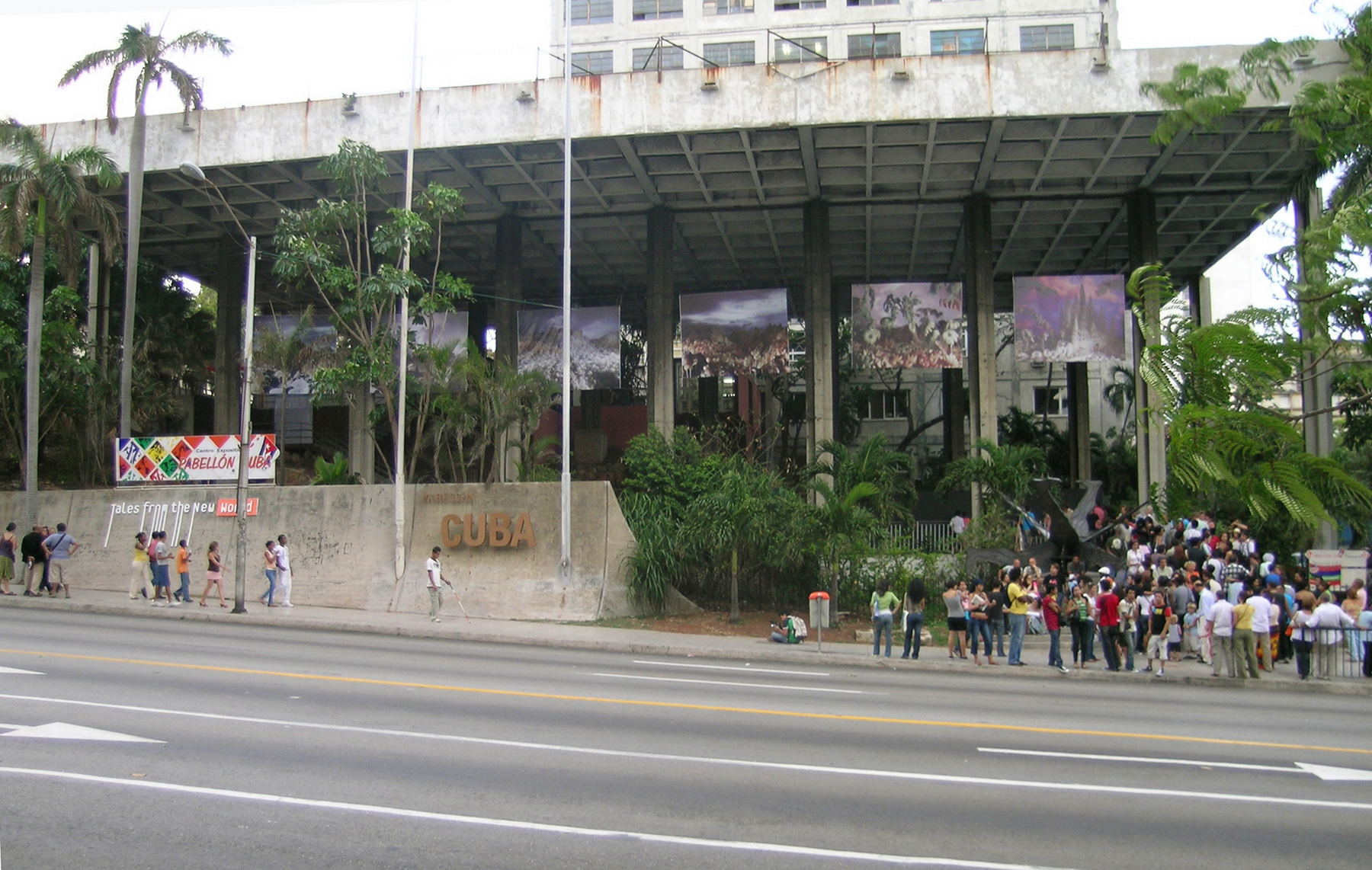
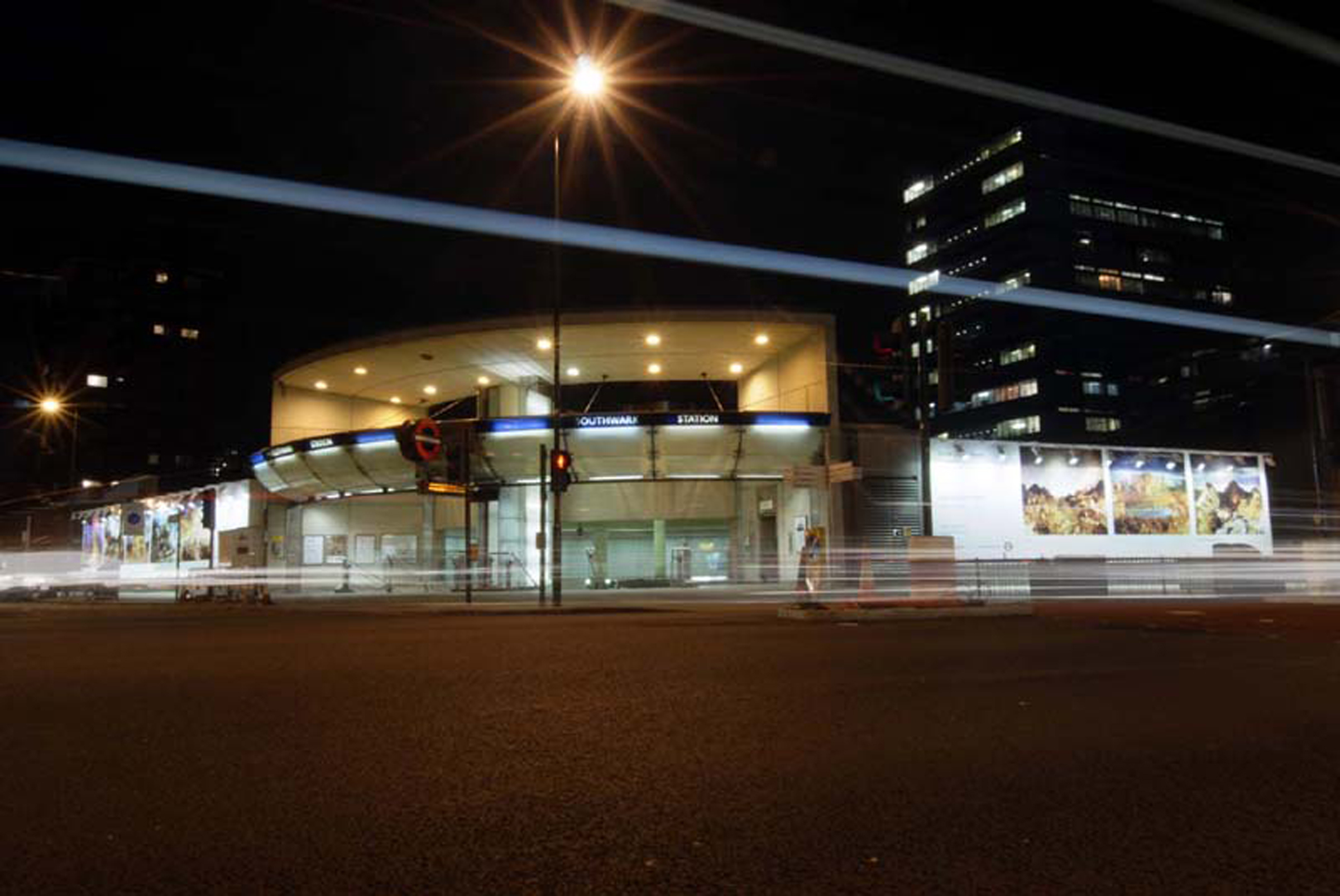
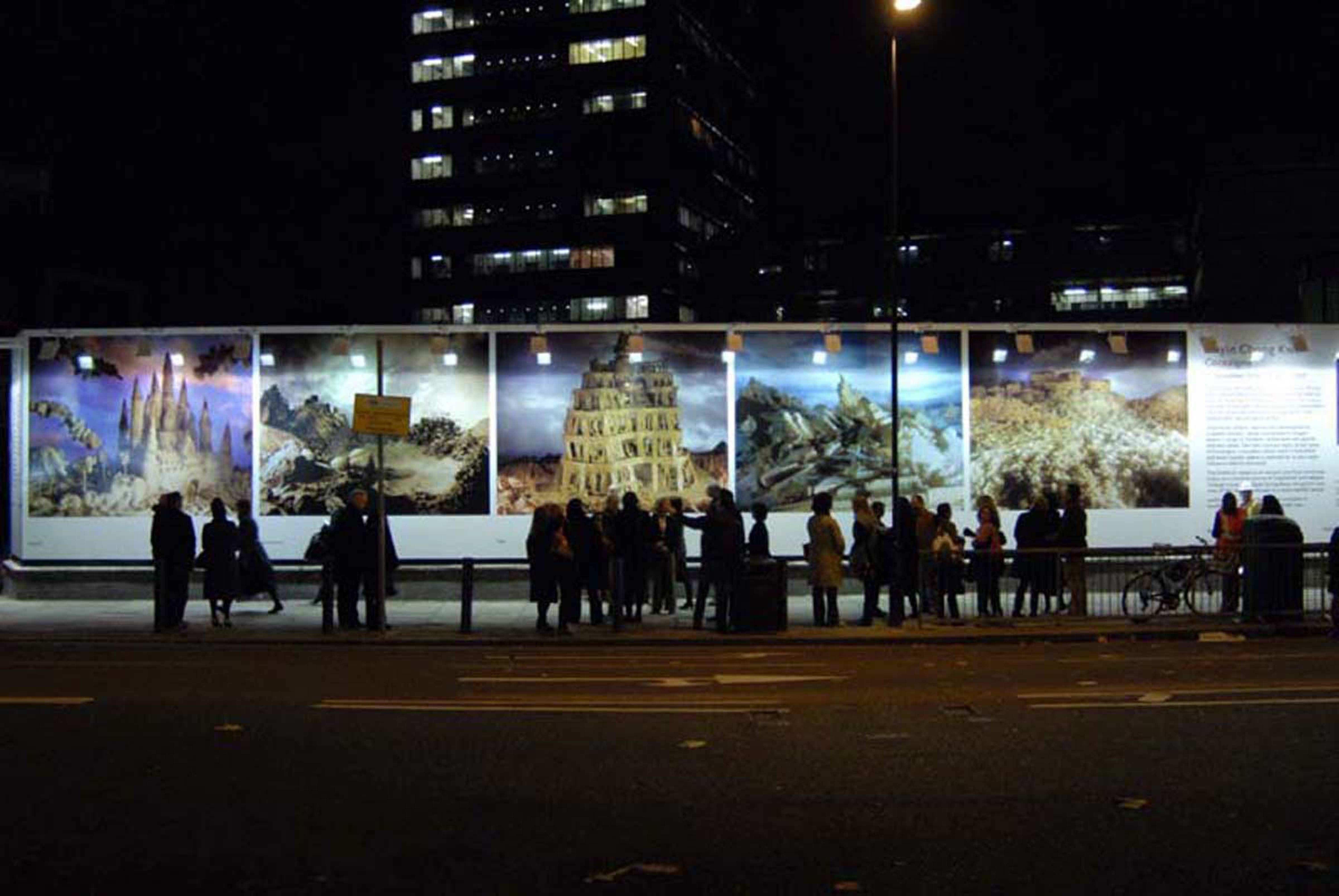
‘Cockaigne’ is a series of twelve large-format photographs based on 14th Century ideas of a glutton’s paradise. Each depicts a mythical landscape constructed from a single foodstuff, which appear enticing but on closer inspection verge on the repellent, the cheese in ‘Resort’ is plastic and slimy, the dried meat in ‘Babel’ beginning to sweat. The series developed out of research Gayle Chong Kwan did in Mauritius on how tourism is altering, incrementally theatricalising, and consuming the landscape of the island. This has been gradual and takes different forms, from Sugar Beach Tourist Resort, which re-presents and packages its colonial past as tourism, to cutting down traditional causarina trees, which are replaced by landscaped beaches and palm trees. She wanted to explore aspects of the ‘touristic gaze’, created as a theatrical set, constructed via a single view-point of the camera lens.
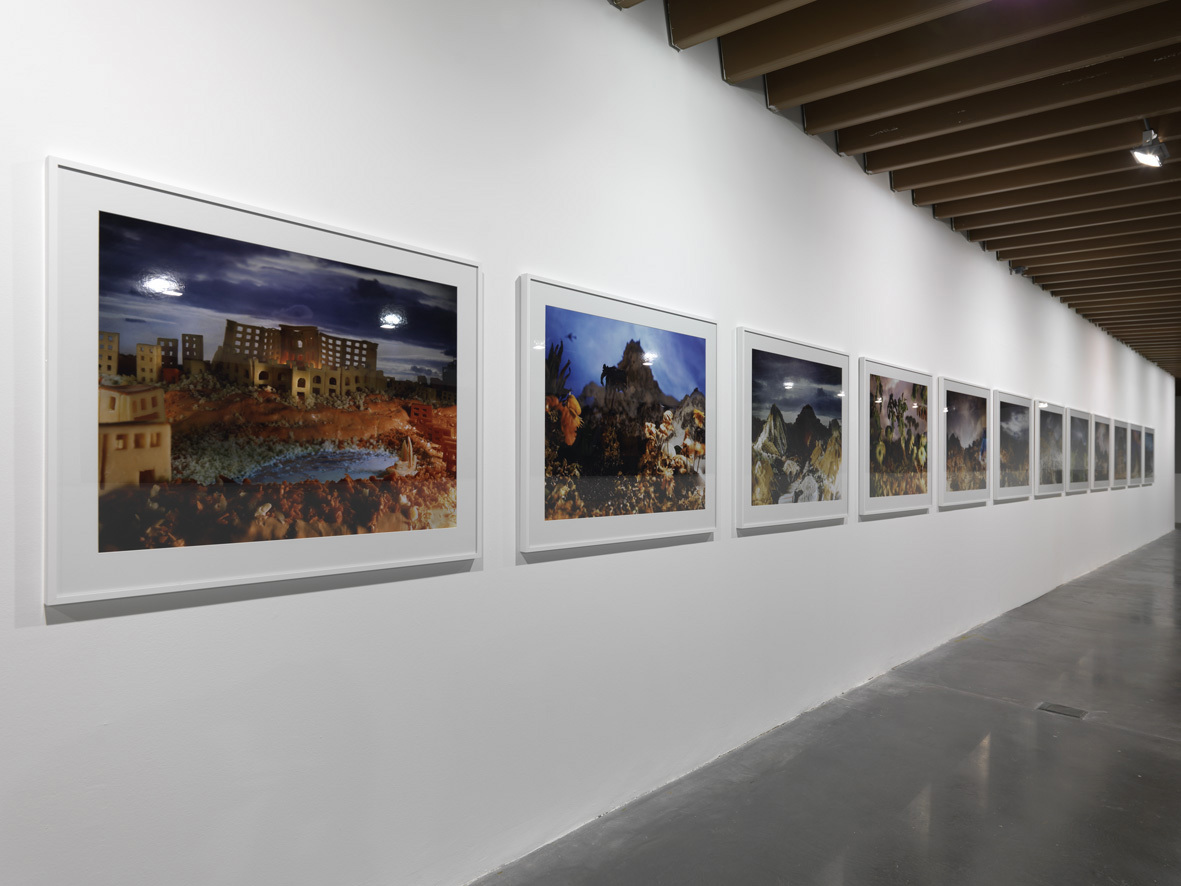
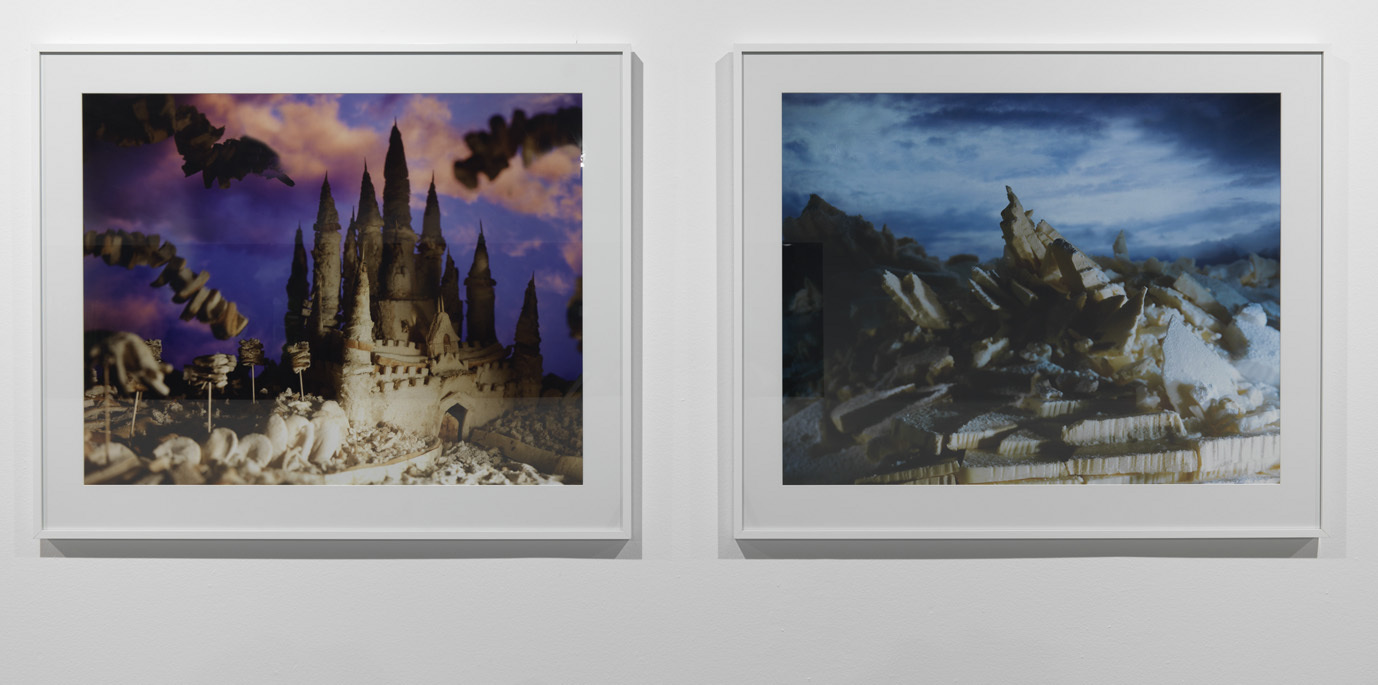
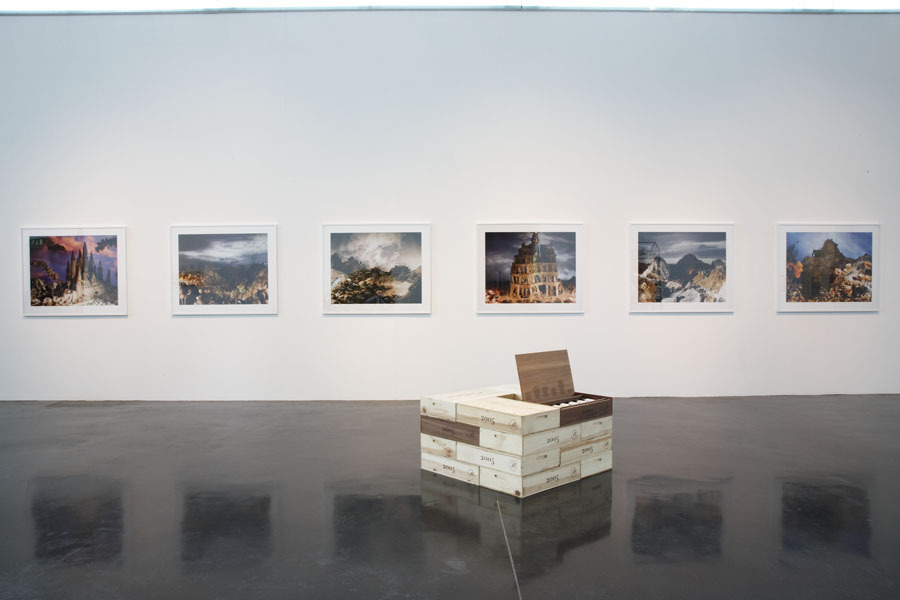
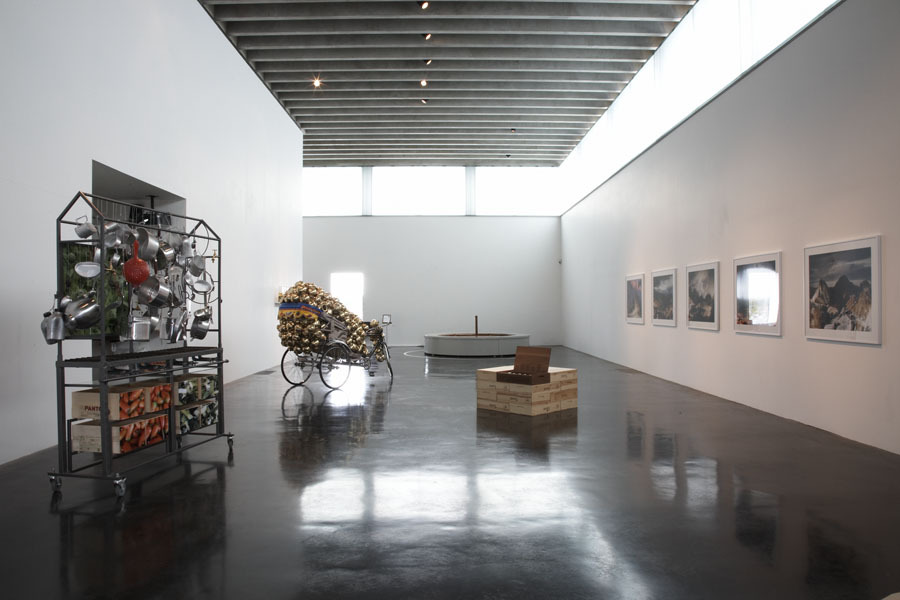
Themes of inequality, hunger and excess have always featured in the Cockaigne myth. In the Dutch medieval poem it was a peasant’s fantasy of food and justice, in England an anti-clerical satire. The twentieth century Swedish emigration ballad The America Song still sung of chickens flying onto the table and money growing wild, while simultaneously in America they dreamt of The Big Rock Candy Mountain where little streams of alcohol come trickling down the rocks and all the cops have wooden legs. These fantasies are always double edged; in telling us about people’s dreams they speak volumes about privation and hunger, lives of labour and no reward. What is surprising is how little is asked for; food and drink, sex, warmth and no arguments. Even the meals are not luxurious, sausages rather than foie gras. These are not the aspirations of the nobility but of the peasants and immigrants, it is the paradise of the poor man. Likewise the food in Gayle Chong Kwan’s contemporary version is more reminiscent of Morrison’s than the delicatessen at Harrod’s. Yet, because there are significant variations in how individual photographs function at the levels of reference and artifice, they do not make clear statements as a series. For instance, Babel and New Atlantis explicitly allude to the history of art, in this case to Brueghel and Casper David Friedrich. In both of these images the foodstuff has been principally chosen for its suitability as a building material and there is no relationship between Brueghel and meat, or Friedrich and lard. In contrast, the specific use of oats in Brigadoon is important. When MGM studios wanted to film this story of a mythical Scottish village they couldn’t find a sufficiently Scottish landscape so used a studio set. Here, then, the use of oats creates a landscape which is ludicrously Scottish.
Fiona Candlin - Portfolio, Issue 41, June 2005 (excerpt)
There is also a wide variation in how convincing the photographs are as landscapes. In Brigadoon the oats have been successfully transmuted into vegetation and similarly the fish of Voyage to the World at the Centre of the Earth coalesce into hills. Lotosland and New Amazonia are pleasing landscapes first, rice and chocolate second. At the other end of the spectrum Adonia and Avalon are unmistakeably lettuces and apples and their low level of artifice make us acutely aware that the landscapes are indeed a construction. We are never entirely seduced by or entirely disbelieving of the Cockaigne fantasy. This ambivalence is reiterated in Resort and Republic. The processed cheese in Resort might indicate that the fantasy of exotic holiday locations is almost inevitably a disappointment, one dreams of the real Spain, but ends up with a processed simulacrum. Alternatively, the Disney castle Republic is built of bread Whereas cake would have had frivolous connotations, the use of bread suggests that dreams of abundance and ease, however disappointing they finally are, might also be a basic necessity. In Pieter Brueghel’s painting of The Land of Cockaigne there is an egg in a cup running around with a spoon sticking out of the opened top. Depending on whether this is interpreted as an empty eggshell or, in keeping with oral tradition, an egg running to be eaten, the painting can be read as a condemnation of gluttony and idle lives or as a celebration of satiation. Chong Kwan’s complex photographs remind us that contemporary dreams of pleasure, ease and satiation are similarly ambivalent.
Fiona Candlin - Portfolio, Issue 41, June 2005 (excerpt)
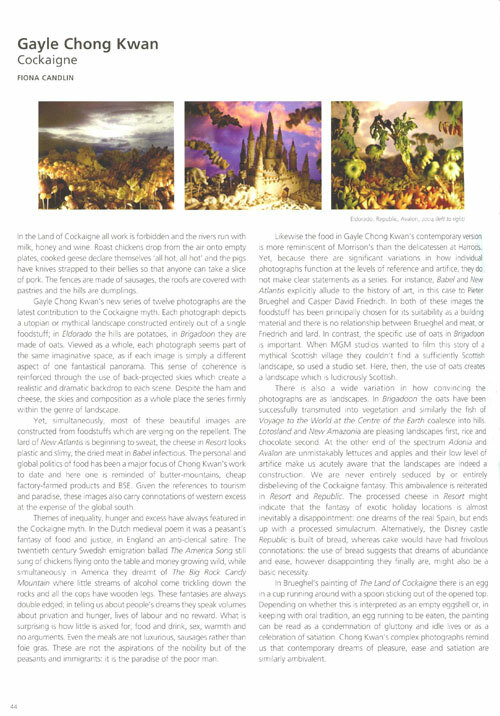
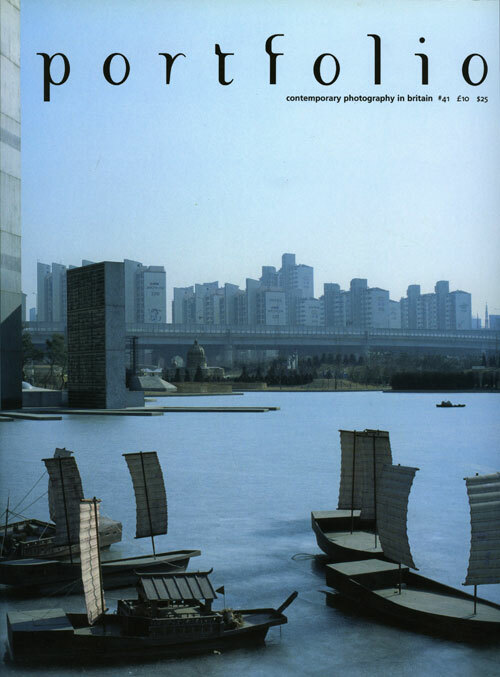
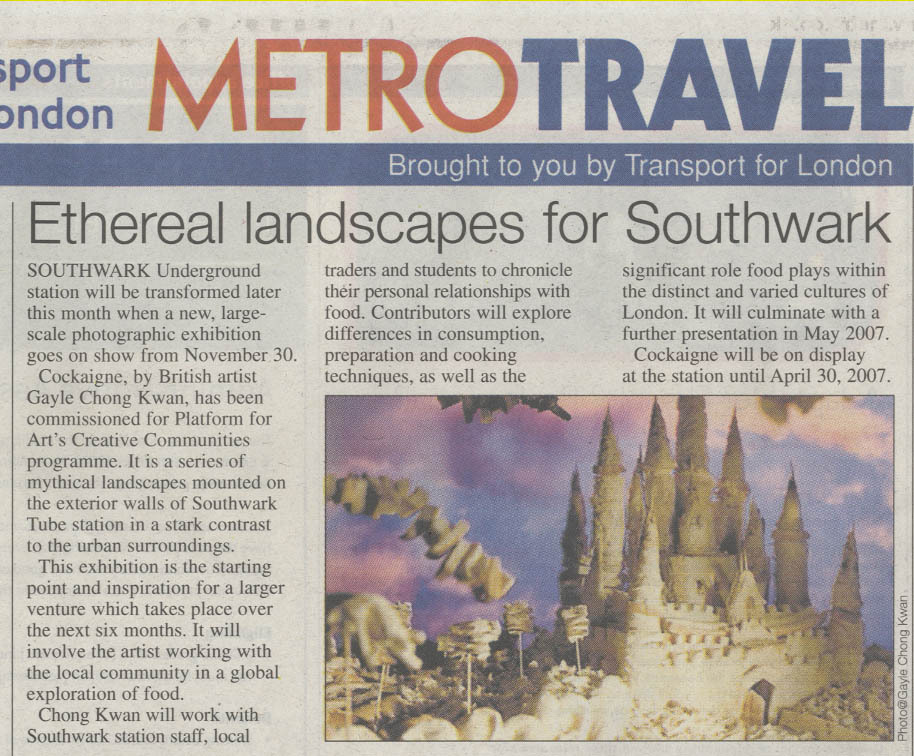
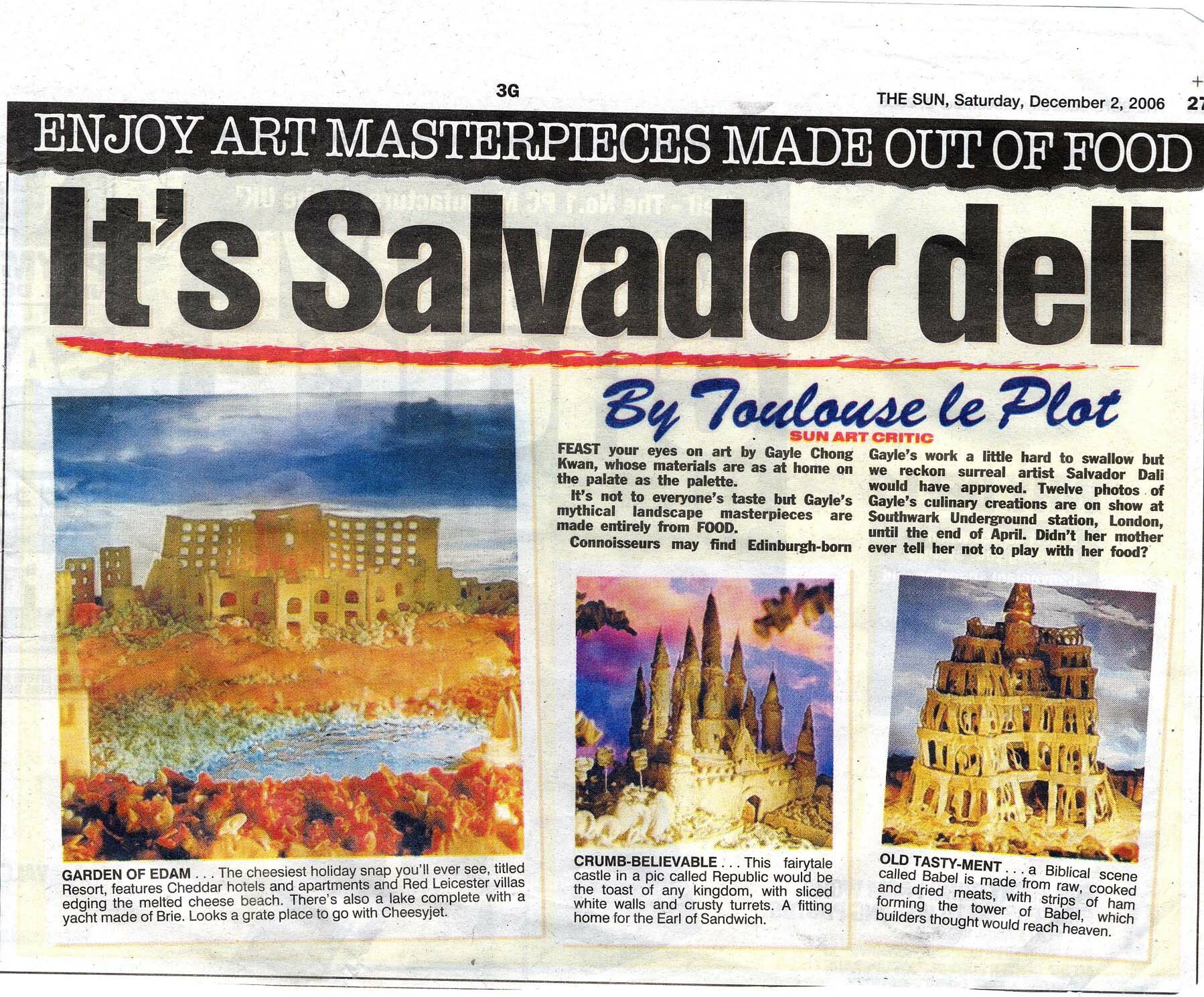
Utopia, Fundacion Municipal de Cultura, Valladolid, Spain, 2008
Utopia, PhotoEspana, Museu Berardo, Centro Cultural do Belem, Lisbon, 2008
Fantasy Landscapes, Asia House, London, 2007
Southward Underground Station, Art on the Underground, 2006
Government Art Fund Exhibition, British Ambassador's Residence, Paris, 2008
Pot Luck, Art Circuit Touring Exhibition, New Art Gallery Walsall, Aberystwyth Art Centre, PM Gallery, Southampton City Art Gallery, 2009
Finger Buffet, Travelling Gallery, Scotland, 2009
Fantastic Fake and Found, Potteries Museum and Art Gallery, Stoke-on-Trent, 2008